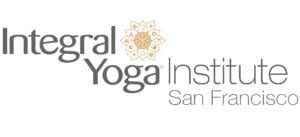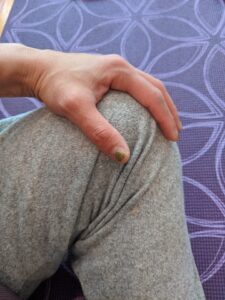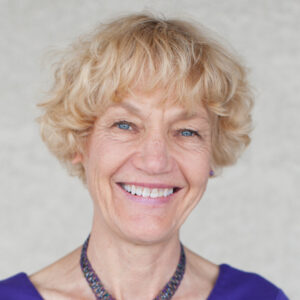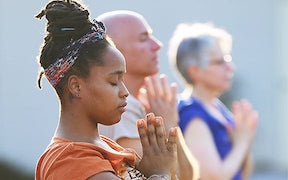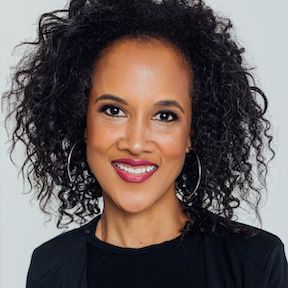Your Knees Need Your Love
by Dawn Summers
Oh no! Suddenly my left knee got really wonky when I was going up and down stairs. I could hardly bend it or put weight on it without pain. This was a call to action!
Yoga having been fundamental for me since 1985, when I became an Integral Yoga Teacher, I decided to see if I could resolve it with the right yoga practice. Having also been trained as a Yoga Therapist by Gary Kraftsow, founder of the American Viniyoga Institute, I saw here an essential and compelling crisis/opportunity/necessity to apply my knowledge in practice.
Observing the reality of humans who are compromised in their ability to walk – for whatever reason – has reinforced my priority in maintaining this function, as well as my appreciation of and joy in walking. Successful knee and hip replacements in my friends and students are a wonder of western medicine, but one I hope to avoid. Yes, these parts can be replaced, but the ‘after-market’ parts are not as good as the ‘factory originals’!
Consequently, I was very motivated to understand the source of my knee imbalance/misalignment and to resolve it with yoga, if possible. I also had Plan B if needed – consulting a Physical Therapist. I highly respect their anatomical knowledge and skills and have seen many exercise regimens from PTs. While often effective, they are, often, unfortunately, boring to do – rather one-dimensional as compared to a full-spectrum, body/mind/spirit yoga practice. But, let me not get too grandiose – my knees were the issue, not my dharma or the vrittis of my citta.
So, some after some svadyaya (self-examination of my hips, legs and knees), I discovered the weak lines and muscles contributing to the imbalance. The torque on the knee joint can originate from either the hips or the foot/ankle alignment. Some study of old notes from my therapy training and other resources gave me the creative asana tools I needed to create a practice.
This was a purely biomechanical practice, very different from the yoga practice that had been created by my Yoga Therapist and teacher, Gary Kraftsow, for my cancer therapy. Of course, the cancer therapy practice included mantra, intentions with gestures (nyasa) and very specific pranayama. These yoga tools had been masterfully assembled as an adjunctive support for the Western medical therapies I was receiving. I do use and apply these tools in every practice, but getting my asana chops right was the key for my knees.
Since I was able to correctly identify the weaknesses and imbalance in my left leg, and appropriately apply the yoga (the very definition of “Viniyoga”), my knee issue resolved within a month of practice.
As with other life challenges, I learned many lessons, primarily about biomechanics and tracking lines which involve the hips, legs and feet. I was quite relieved to move away from this dangerous knee issue and recover full function; especially so I can happily take my long walks, now that swimming pools are closed and I have no other alternate source of major exercise besides perambulation.
Call me a Happy Yogini with Bees Knees!
You, too, can have happier knees from participation in the online workshop Knees Need Good Yoga on May 30 from 1-3pm. You will explore your own hip/leg/knee relationship with a targeted practice specific to supporting the knees, plus an understanding of why these postures are useful. Yoga teachers can also receive two Yoga Alliance CE hours.
Dawn Summers, YACEP, ERYT-500, is a certified Yoga Therapist who has been teaching yoga since becoming an Integral Yoga teacher in 1985. She has been a senior faculty in Teachers Training and Yoga Therapists Training Programs for the American Viniyoga Institute. She teaches classes through Ocean Yoga and works privately with individual students.
